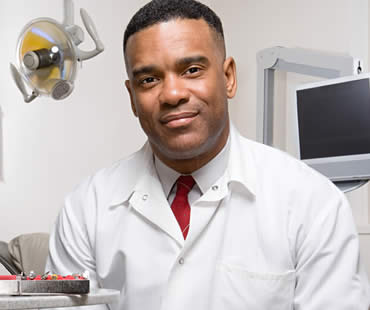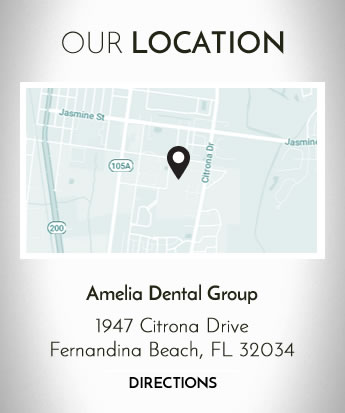
After suffering tooth loss for any reason, it’s important to restore your mouth’s function and appearance with restoration options through your dentist. In the past, many patients have gotten dentures for this purpose. Dental implants provide a newer and very popular option. If you already have dentures but aren’t completely satisfied with them, is it possible to change to dental implants instead?
The answer is yes! Of course, you need to consult your dentist to make sure that you are a good candidate for implants. There are a number of reasons that denture wearers might decide that implants are a better solution to their tooth replacement needs. Some patients find dentures to be uncomfortable because they don’t stay in place securely or they irritate the gums. Some find a more permanent remedy to be more appealing than dentures, and implants do provide a long-lasting solution to tooth loss. If patients with dentures don’t like them and aren’t wearing them consistently, they aren’t achieving the goal of restoration.
There are some additional complications that can occur with dentures, making implants more appealing. Trouble speaking and eating is a hazard if the dentures slip, as well as jawbone loss and increased wrinkles. Some patients even alter their diets due to problems eating certain foods. The increased dental hygiene regimen also bothers some patients who are unwilling to do the extra tasks required.
If you dislike your dentures, consider making the switch to dental implants. It might restore your self-confidence as well as your mouth’s function and appearance.
Our dental office is located in Fernandina Beach

General dentistry offers exactly what the name implies: dental care related to the general maintenance of good oral health. The ideal way to look at dentistry is preventative, which means focusing on good oral hygiene and functionality before problems can take hold. Finding a qualified and skilled general dentist who you visit every six months for checkups is the best way to prevent serious dental issues and help you maintain excellent oral health.
A trip to the general dentist for you or any of your family members, no matter their age, is a smart way to keep your smile looking and feeling great. Your general dentist will help create the perfect dental plan that depends on your personal oral health and needs. A typical dental visit includes thorough examination, X-rays or other diagnostic tests, professional teeth cleaning, and any treatments that might be needed for your condition. If a certain treatment isn’t available through your general dentist, it’s likely that you’ll receive a referral to a reputable specialist to complete the work.
Every dentist is unique, so you’ll need to inquire about the specific treatments available at your dentist’s practice. Some common services that many general dentists provide include:
- Dental sealants
- Fluoride treatments
- Professional cleanings
- Gum scaling or recontouring
- Fillings
- Bonding
- Root canal therapy
- Crowns and bridges
- Dental implants
- Dentures
- Veneers
- Orthodontics
In addition to dental treatments, your general dentist will evaluate your at-home hygiene routine and make suggestions for improvement. You will learn proper brushing and flossing techniques, as well as learn about any additional products or practices that might improve your oral health. Your general dentist wants you and your family to have the best smiles and oral health possible, and will help you achieve that goal.
We treat patients from Fernandina Beach and the surrounding area

Thanks to advanced techniques and technology, your family dentist can now offer you and your family a wide variety of cosmetic dentistry treatments to help you achieve the smiles you desire. There is often no need to search for a specialized cosmetic dentist, as your family dentist can provide many of the cosmetic dental procedures right in their office. Some of the cosmetic treatments you can expect to find at many family dentists include:
- Professional teeth whitening is used to improve the appearance of stained or discolored teeth, can be completed in as little as one visit, and can lighten teeth up to ten shades.
- Dental bonding with tooth-colored resin can be applied to repair discolored or chipped teeth.
- Crowns and bridges can be placed to fix damaged or missing teeth and can be matched to the color, height, texture and overall appearance of your natural teeth.
- Tooth-colored composite fillings come in multiple shades to match your natural tooth and are used as an attractive alternative to traditional silver or gold fillings.
- Porcelain veneers are placed to conceal cracks, chips, and gaps and create a whiter, more perfect smile.
- Inlays or onlays, also called indirect fillings, can be made of composite, tooth-colored material, are long-term, and are used on teeth with tooth decay or other damage needing larger coverage than a traditional filling.
- Complete and partial dentures are used to replace missing teeth and create a more natural-looking smile.
- Invisalign is an orthodontic solution used to straighten misaligned or crooked teeth.
Many of these procedures can be combined to create the beautiful and healthy smile you desire. Schedule a consultation with your family dentist to find out more about the cosmetic procedures they offer to help you achieve a winning smile.
We treat patients from Fernandina Beach and the surrounding area

Whitening your teeth to improve your smile is a popular cosmetic treatment, but you should understand that it does have some limitations to consider. If products are used correctly or if you seek the professional help from a qualified dentist, you can usually achieve a bright and appealing smile. Here are some things to think about when it comes to teeth whitening.
Methods:
You should not expect over-the-counter methods to whiten your teeth more than a couple of shades. The whitening ingredients available in products at your drugstore are not as strong as those used at your dentist’s office. Consistent and correct use of over-the-counter options can help whiten your teeth, but it may not be as much as some patients hope will occur. On the other hand, professional methods can produce dramatic and quick improvements to the color of your teeth.
Habits:
Certain habits contribute to stains on your teeth and if you don’t limit or stop activities prone to discoloring teeth, your newly whitened teeth may become discolored again. Foods like berries and curry, drinks such as coffee and red wine, and habits like smoking will all likely negatively affect your tooth color.
Restorations:
Bridges, crowns, and laminates might not respond in the same way to whitening agents as your natural teeth do. Ask your dentist about how your restorations might react to teeth whitening.
Side effects:
Tooth sensitivity is the most common side effect of whitening procedures, causing some patients to be unable to handle some methods of treatment. Gum sensitivity is another potential problem, but usually dissipates soon after the whitening procedure. Weakening of a restoration may also occur during whitening treatment, sometimes making it necessary to replace them.
Expectations:
Teeth whitening must be occasionally repeated if you want your bright smile to remain for a lifetime. The effects do not last indefinitely, because aging and activities can stain your teeth. Excessive bleaching may damage your teeth though, so be sure to discuss your whitening treatment with your dentist.
Our dental office is located in Fernandina Beach

If you or a loved one is scheduled to have or has recently had oral surgery, you probably have a lot of questions. Here are some of the most common questions:
- One of my stitches came out after my surgery, should I be worried? Losing a stitch isn’t a problem. In the majority of cases, stitches are put in place during surgery to assist in clot formation and bleeding control. If you have undergone a bone-graft procedure, however, contact your surgeon because you may need to be seen immediately.
- What can I eat after surgery? Immediately following surgery, eat only soft foods of tepid temperature. Avoid very hot or very cold foods. Eat nothing that is crunchy or chewy so you won’t damage the surgical site.
- I am having a lot of pain following my procedure, what should I do? If you have been prescribed pain medication, take it as recommended. If no prescription was given, use over-the-counter medicines containing natural anti-inflammatory properties such as ibuprofen. Stay hydrated by drinking room temperature water and get plenty of rest.
- I had a tooth extracted, how can I tell if I have a dry socket? Dry socket is the result of the loss of the blood clot present in the extraction site. Smoking, using a straw, poor oral hygiene or failure to rest properly following the extraction procedure can lead to this condition. Typically dry socket will present within one week of extraction and is treated with sterile wash and pain-relieving, medicated gauze.
- I had a procedure this morning and am still bleeding. Is that normal? Bleeding following extractions or other surgical procedures is common. If you are bleeding more than normal, bite down on some sterile gauze or a damp teabag for twenty or thirty minutes. Don’t keep removing the gauze to look for blood; that can make the bleeding worse. Call your surgeon if you feel your bleeding is excessive.
Your oral surgeon can answer these questions and more. Don’t hesitate to call the surgeon’s office to get the peace of mind you require to heal comfortably following your procedure.
Schedule your appointment at our Fernandina Beach dental office
A beautifully white smile is often perceived as a sign of youth and vitality, but over time it can gradually fade. Eating certain foods or drinking dark-colored beverages, taking particular medications and simply aging can all take its toll on your teeth. It’s hardly surprising that tooth whitening has become one of the most popular cosmetic dental procedures in recent years. Professional teeth whitening is safe and effective and can quickly rejuvenate your smile. If you’re thinking about whitening your teeth, there are several options to choose from which include:
In-Office Whitening
In-office teeth whitening is hugely popular, as you can literally book a lunch time appointment and leave with a dazzling white smile. Surface stains can quickly be eliminated, and teeth can be brightened by up to eight shades in just an hour. This option is the most expensive, and you don’t have much control over the final results. Your dentist in Fernandina Beach will activate the bleaching gel with a special light so the final result should be a stunning white smile.
Custom-Made Take-Home Teeth Whitening Kits
Not everyone wants to whiten their teeth so quickly, and custom-made whitening trays enable you to safely bleach teeth in a more controlled manner. Your Fernandina Beach cosmetic dentist will take impressions of your teeth that are used to fabricate custom-made whitening trays. You’ll be shown how to use these trays, and should wear them for as long as directed. Most people will begin to notice real results within a few days, but they generally need to be used for two or three weeks to achieve optimum effects.
Over-The-Counter Teeth Whitening Kits
Over-the-counter whitening kits come in the form of trays and whitening strips and can cost between $20 and $50 so it’s tempting to think they will save you money. However the bleaching gels contained in these kits are not as strong as those available to your dentist. In addition, there’s the possibility these kits could irritate your gums as ill-fitting whitening trays can allow the gel to leak out.
We look forward to seeing you in our Fernandina Beach dental office






